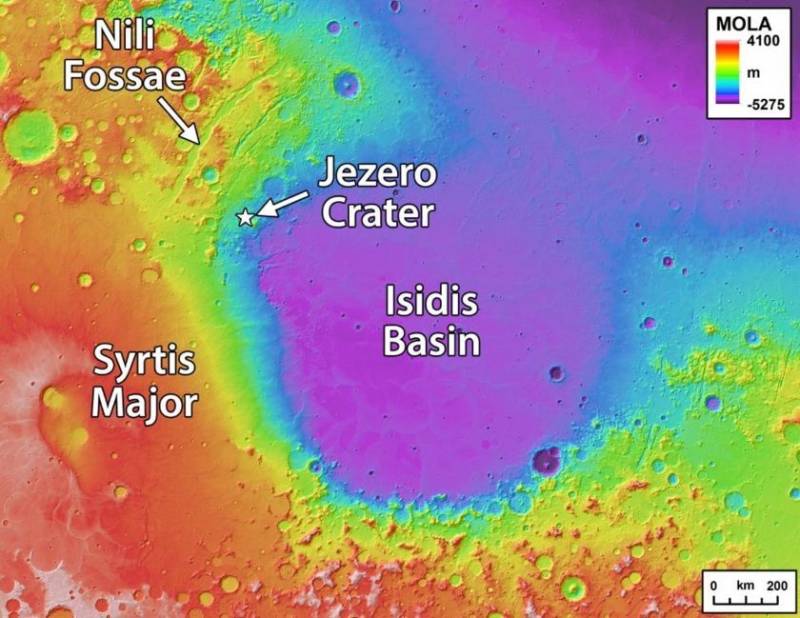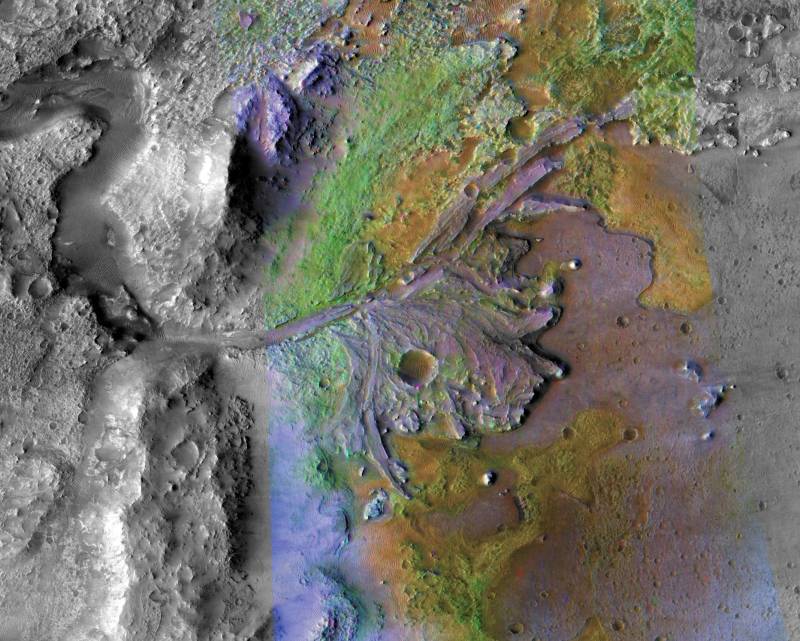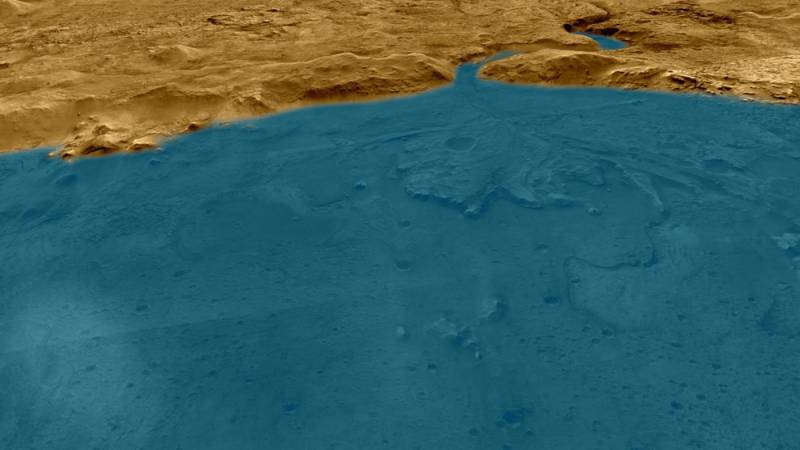For the first time in over 40 years, NASA plans to search for Martians — not living ones but the very long dead remains of life forms that may have thrived on a watery planet 3.5 billion years ago.
NASA Hopes to Find Direct Evidence of Past Life on Mars With 2021 Landing

Call it a fossil hunt. NASA plans to send its soon-to-launch Mars 2020 rover to a spot researchers hope will yield direct evidence of past life there. It may turn up in the form of mineral residues of once-living creatures, or possibly in physical formations, like stromatolites — rocks formed by the activity of ancient microbes that thrived in shallow, sun-drenched water. On Earth, stromatolites are among the oldest extant remnants of the earliest terrestrial life.

Jezero Crater: Fossil-hunting Site?
Mars 2020’s target of interest is the 30-mile-wide Jezero Crater, an impact feature at the edge of Isidis Basin. Through measurements and images the Mars Reconnaissance Orbiter took from orbit, Jezero has shown great promise in the search for signs of past life.

About 3.5 billion years ago, when a more Earth-like environment existed on Mars, Jezero Crater was probably flooded with water. A fanning complex of delta-like deposits sprouting from a likely river inlet promises to be a repository of sediments washed down from higher ground.
And, maybe most tantalizing of all, researchers have discovered a layer of carbonate minerals ringing what once upon a time would have been a shoreline of the ancient lake, like a chalk outline of a body of water that has dried up.
On Earth, geologists find calcium carbonate in the fossils of ancient seashells, coral and stromatolite formations, as well as layers of sedimentary limestone that form over time from accumulations of these remains.

So, imagine astrobiologists’ excitement at finding concentrations of carbonates tracing the shoreline of an ancient lake, where sunny, shallow waters may have once provided a life-nurturing environment. Accordingly, Mars 2020 plans to visit this vestige of shoreline during its exploration of Jezero Crater.
Mars 2020
Scheduled for launch in 2020 and a landing on Feb. 18, 2021, Mars 2020 is the first spacecraft NASA has designed to search for signs of Martian life since the twin Vikings landed 43 years ago.
The Vikings tested scoops of Martian soil for the chemical signatures of biological respiration, signs of microscopic organisms alive on Mars today. The results remain controversial and inconclusive.
Mars 2020 is equipped with an instrument called SHERLOC (Scanning Habitable Environments with Raman and Luminescence for Organics and Chemicals), mounted at the end of its robotic arm. With a magnifying camera to examine fine-scale mineralogical features, and an ultraviolet laser and spectrometer for detecting and classifying minerals, SHERLOC will get up close and personal with the rocks in Jezero Crater to look for shapes and chemicals ancient life may have left behind.
If the layer of carbonates lining the ancient shoreline of Jezero Crater’s now-dry lake bed harbors chemical residues or mineral structures that are the fossilized remains of Martians, then the long anticipated moment when life beyond Earth is discovered may be only a few years away.
Imagine that.